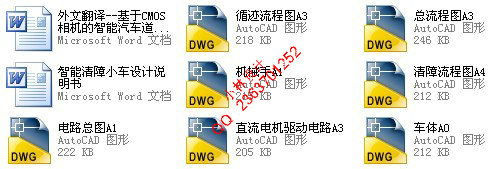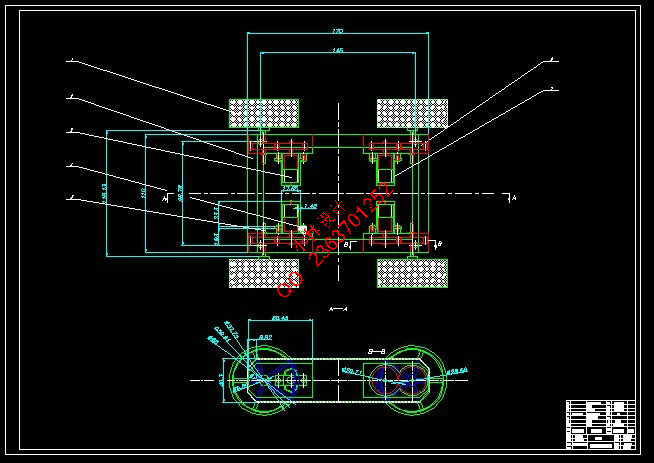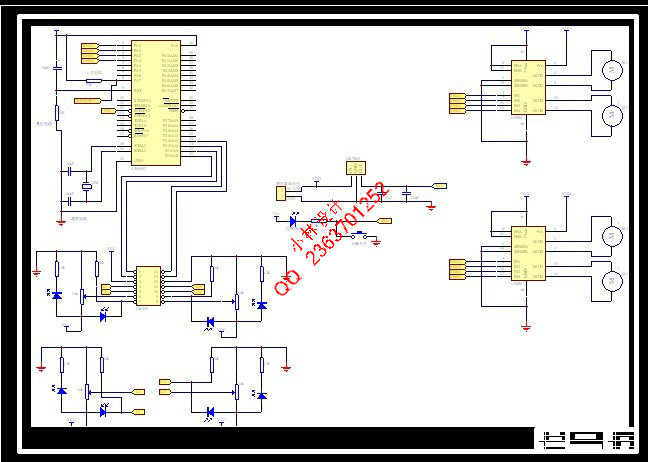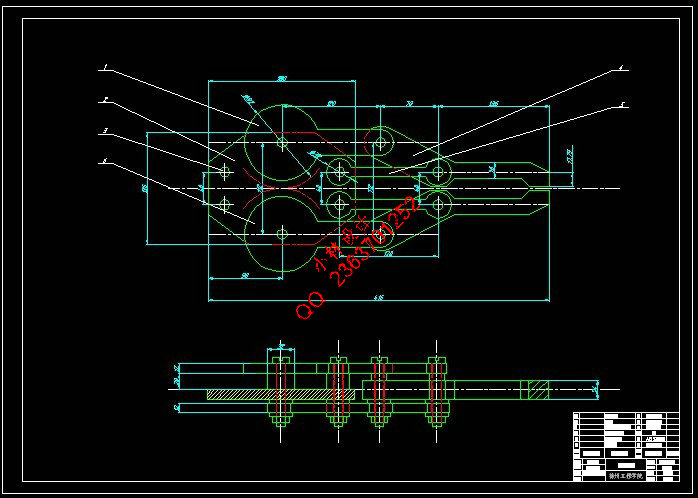|
设计描述:
文档包括:
word说明书一份,共51页,约17000字
CAD版本图纸,共7张
摘要
智能小车在自动化生产线、仓库管理、机器人服务、环境监测、航空航天等领域有广泛的应用。本文介绍了一款集自动寻迹、障碍物监测、障碍物清除等功能于一体的智能小车。智能小车采用AT89S52单片机为系统控制核心,利用反射式光电传感器检测识别黑线,通过比较器反馈高低电平信号给单片机,从而控制直流电机的运动,实现寻迹功能。安装于车体前端的点触开关实时监测黑线上的障碍物,一旦触发开关,拉低所接单片机I/O口,触发外部中断,从而控制机械手夹持障碍物,配合小车运动,达到清除障碍物的目的。本课题研制的智能小车样机实验证明了本文叙述的技术方案的有效性和正确性,可以为今后全国及省内电子大赛提供宝贵的经验。
关键词 单片机;传感器;循迹;清障;
Abstract
Intelligent car has been widely used in automated production lines, warehouse management, robotics services,environmental monitoring, aerospace and other fields.This paper introduces a intelligent car, with the functions of automatic driving, barriers monitoring and barriers removing . The intelligent car use AT89S52 SCM as control core. By using reflective photoelectric sensor to detect the information of black track,the intelligent car acquires the information and sends them to the MCU to control the movements of the DC electric motors for tracing function. Point-touch switch installed at the front of the car monitor barriers on the black line everytime. Once the trigger switch, the signals of I/O trigger external interruption to achieve the purpose of remove barriers.The test shows that the intelligent vehicle design is the effectiveness and correctness.Consequently,the issue can provide invaluable experience for the electronic competition of the national and provincial.
Keywords SCM sensor track finding barriers removing
目 录
摘要 I
Abstract II
第1章 绪论 1
1.1 智能化小车发展现状与趋势 1
1.1.1 课题背景 1
1.1.2 移动式机器人在国内外研究现状 2
1.2 研究的目的和意义 2
1.3 研究的内容 2
第2章 智能清障小车系统 4
2.1 系统总体方案 4
2.2 系统方案论证 4
2.2.1 车体方案论证 4
2.2.2 小车结构方案论证 5
2.2.3 障碍物清理单元方案论证 5
2.2.4 控制器方案论证 6
2.2.5 供电单元方案论证 6
2.2.6 障碍物识别单元方案论证 7
2.2.7 运动单元方案论证 8
2.2.8 循迹单元方案论证 9
2.3 系统最终方案 10
第3章 智能清障小车硬件设计 12
3.1 系统硬件电路介绍 12
3.2 障碍物监测模块介绍 12
3.3 障碍物清理模块介绍 13
3.3.1 机械手介绍 13
3.3.2 机械手控制电路介绍 13
3.4 单片机最小系统介绍 15
3.4.1 AT89S52单片机简介 16
3.4.2 单片机使用资源规划 17
3.5 供电模块介绍 17
3.6 寻迹模块介绍 17
3.7 直流电机驱动模块介绍 19
第4章 智能清障小车软件部分 22
4.1 软件开发平台 22
4.2 软件开发调试 23
4.2.1 舵机工作程序仿真 23
4.2.2 直流电机工作程序仿真 24
4.3 系统软件流程 25
4.4 寻迹软件流程 27
4.5 障碍物检测及清理软件流程 28
第5章 系统测试 30
5.1 测试场景介绍 30
5.2 实际测试过程 30
5.3 测试结果分析 32
结 论 33
致 谢 34
参考文献 35
附录I 36
附录II 37
| 









